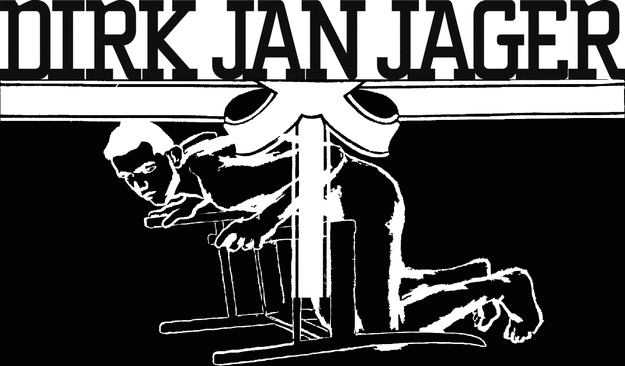So what is all this about? And where does the painter come in? Skins and
exchange, violence and ecstasy. In this new body of work Dirk Jan Jager
has returned to competitive sports. But here we are entering, tumbling
into the territory of O'Brien's exchange: the serge clad mythic
policeman's bottom and the leather hide saddle (perhaps made from a
scrap of the discarded hide of Marsyas).
These paintings are skins both physical and metaphorical. Both occupy
the space of shamanic exchanges: becoming Woman (Navratilova's 1-3)
suspended as she brandishes her racket like some mediaeval depiction of
Saint Michael, or the ecstatic boxer more reminiscent of Bernini's Saint
Theresa. These canvases are themselves flayed skins, hot with blood and
sweat drenched, the site of the tactile surgical exchange: material into
action into image.
Text: Simon Ferdinando
dirkjanjager.nl
